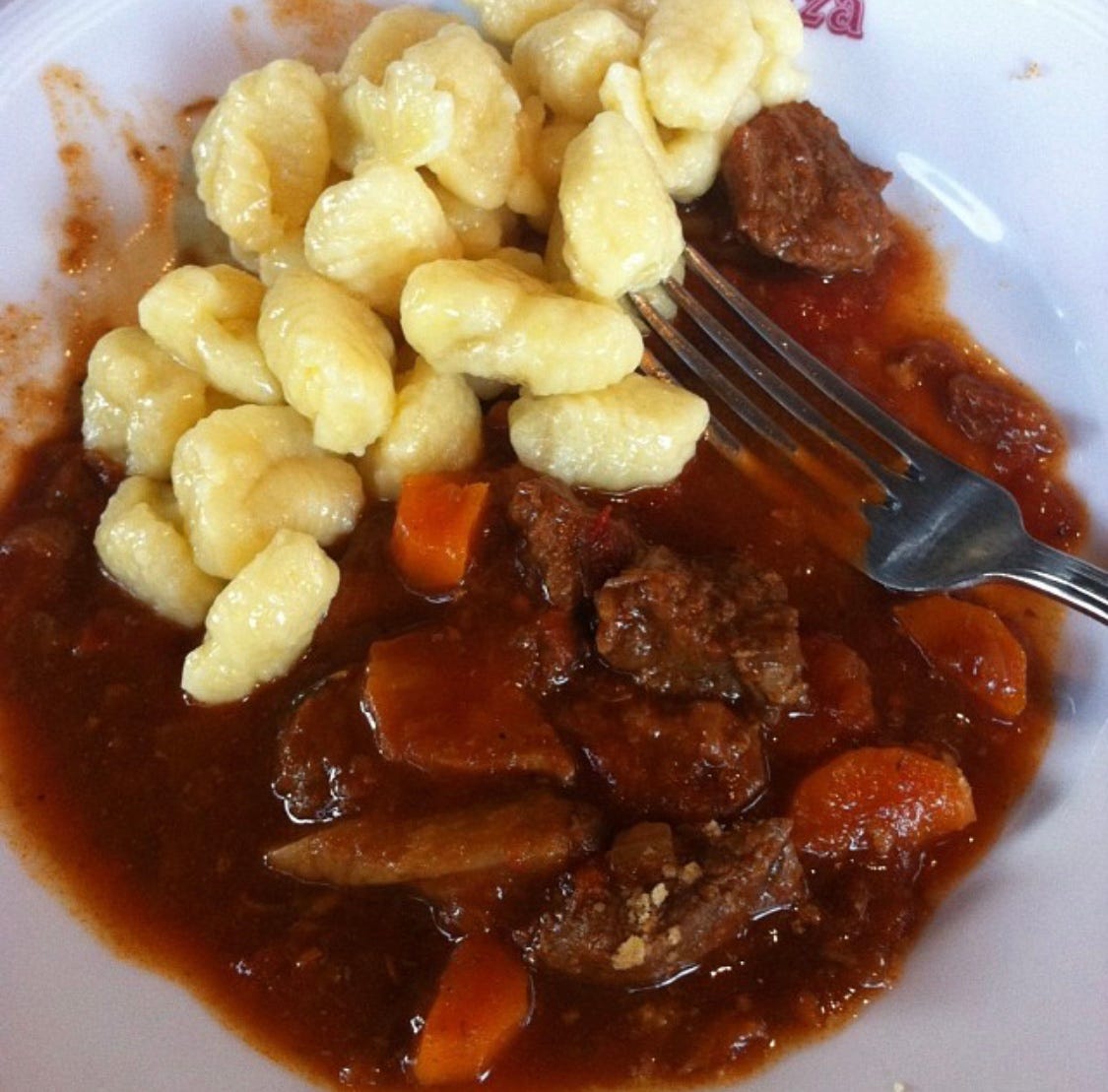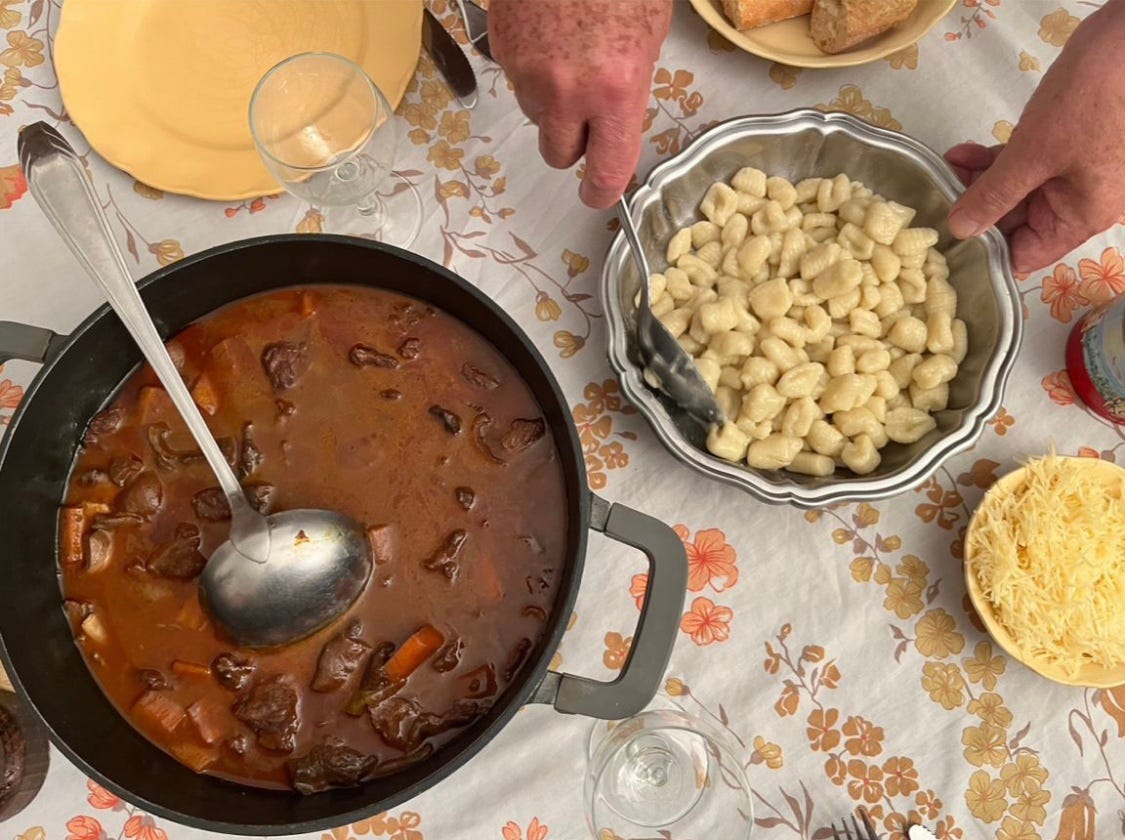The first time I made daube was in Edinburgh, Scotland. I was in my fourth year of university studying History, and living in one of those incredible Georgian flats students really don’t deserve to live in — but somehow in Edinburgh, they do. My four flatmates and I had started a new weekly tradition; each Sunday night one of us would cook dinner. As my first weekend as flat chef was approaching, all I could think about were the comfort dishes I grew up eating. So I called my father to ask him for the recipe for daube – a dish I had eaten many times before, but had never made myself.
Daube is a traditional provençal stew from the south of France. My father, who is from Nice, grew up eating daube that his Italian mother (my grandmother, who I am named after) would make for the family on special occasions. My grandmother was something of a legend in the kitchen and apparently made a truly exceptional daube (I like to think I inherited more than just her name in this sense). At some point she taught my father how to make the stew. Now, decades later, it was my turn to learn the family recipe.
Over Skype, my father carefully explained to me the steps for making daube (these were the pre-smart phone days of Nokia bricks, international calling cards, and good old Skype). I took meticulous notes, writing down everything he said, as if I were learning how to perform a medical procedure from a 911 operator. I wanted this stew to be delicious for my friends – but I was also desperate to have a bowl of daube, just as my father would make it.
In the old days in Nice, daube was incorporated into the fabric of daily life — not just through taste, but through language as well. People would greet each other on the street with the saying, "Couma va la doba?" Literally, "How is the daube?" Or rather, "Hey what’s up?" To which someone would reply, "Plan plan." Which means, slowly slowly. Just like how the stew itself cooks.
And if you're thinking that, “Couma va la doba?” doesn't sound very French, that's because it’s not. It’s Niçois — a dialect that’s a mix of French, Italian and Latin and a sub-dialect of the larger Occitan language. Nice, afterall, was not a part of France until 1860. Prior to that, Nice was a part of the Kingdom of Sardinia. Before that, the Duchy of Savoy. Essentially, Nice was one of those little European city states that was endlessly traded back and forth, between one kingdom and another, after one war or another, over the centuries.
I can still remember that Sunday, many years ago, in the flat in Edinburgh. It was cold and miserable outside. All my flatmates were at the library. I spent a quiet and cozy day, tending to my daube. First, some ingredients were sautéed (garlic, onions, pancetta). Then everyone got to know each other in the pot (beef, tomatoes, wine, herbs de Provence). The next step was to cook it low and slow, the scents and aromas of southern France filling the Scottish kitchen. As I followed my father’s instructions, I remember I was also attempting to get some reading done for class. I alternated between reading and stirring, trying not to get any sauce on a very old book I had found deep in the stacks of the Edinburgh Library.
Eventually, the stew was done, my flatmates returned home, and we all sat down to eat. The daube was a hit. It’s hard to explain the joy I felt seeing my flatmates’ faces light up as they experienced for the first time, the flavors I associate with the very best meals of my childhood. That might have been the exact moment I fell in love with cooking for others.
To this day, daube remains the family recipe I turn to for special occasions. There is magic in the sauce of tomatoes, red wine, and herbs de provence. The cooking time allows the beef to break down into tender mouthfuls that nearly melt in your mouth. And after many hours of simmering, you are left with a luscious and rich stew. You can serve it with roast potatoes, good crusty bread or gnocchi. Whatever you choose to serve the daube with (the recipe is below), I can only recommend eating it with people you love.







